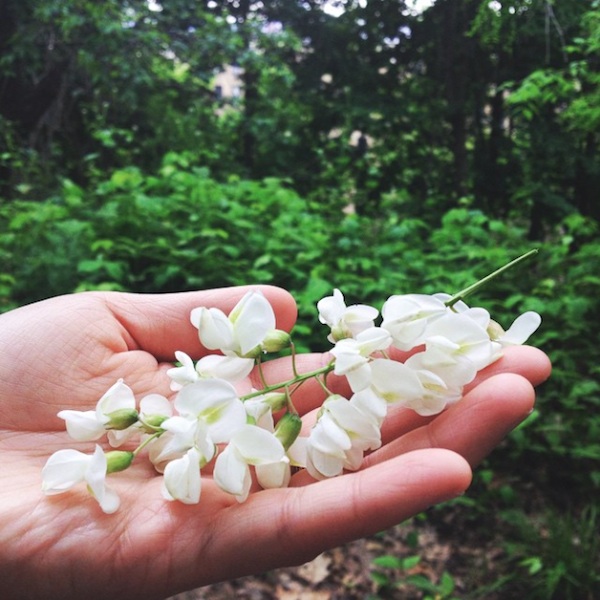What’s even better than reading Marie Viljoen’s regular column about foraging for edible weeds in the urban jungle? Actually going foraging with her.
So last week chef Heather Carlucci and I signed up for one of Marie’s “Wild Food Walks” (specifically this one in Inwood Hill Park) where we got to meet and eat the likes of mugwort, garlic mustard, pokeweed and burdock. Yum.
But the wild flavor that drove me wild was the fragrant flower of the black locust tree, whose jasmine-perfumed blooms I suddenly see and smell…. everywhere. Marie said their annual window is only a week or two, and you’re in luck, dear reader, because it ain’t over yet.
Follow your nose to this easy-to-identify tree, currently covered in clusters of blooms so abundant they can make the whole 80-foot-organism look bright white. Then load up on the flowers (don’t worry, they’re invasive) and hit the kitchen.
You can eat the flowers raw, as a sweet snack or scattered across salad, etc. Or you can fry them up like Jacques Pepin does. But Marie, who shakes a killer cocktail, smartly steered me toward preserving the perfume in simple syrup and infused gin.
For the former, just simmer up your standard 50-50 simple syrup, cool to what Marie poetically calls “blood warm,” then drop in flowers (sans greens, which can be bitter), steep for 24 hours, and strain.
Marie also pickled the flowers in white wine vinegar, but I’m drowning mine in another clear liquid: gin. She says to steep it for a week, then strain (longer could become too tannic). Foragers’ orders.
Once it’s infused and aromatic, I’ll add a few drops of yellow Chartreuse, garnish with the pickled flowers and toast the black locust, and the woman who lead me to it.
Photo credit: @glangholtz



